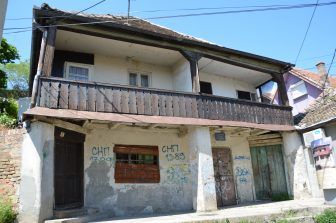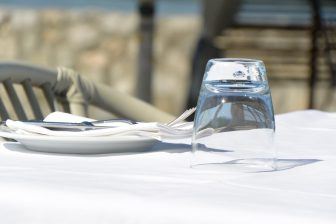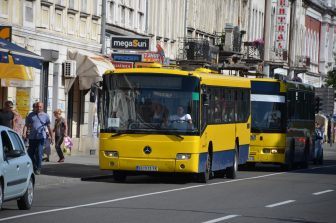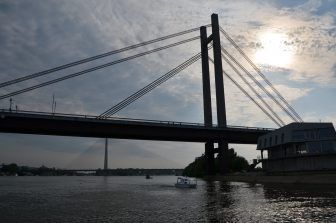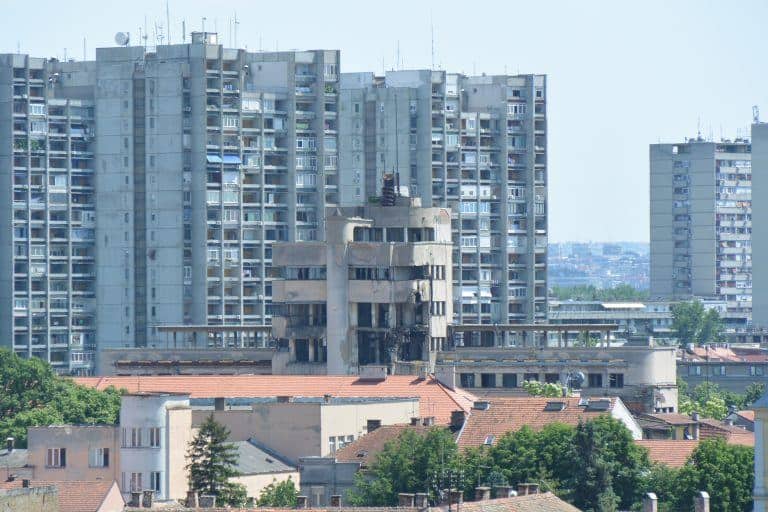
[ May 2018 ] We went into an Orthodox church called the Church of Holy Mother of God in Zemun, a historic part of Belgrade in Serbia.
This church is the largest one in Zemun and the second oldest, which was built in the late 18th century.
Our guide,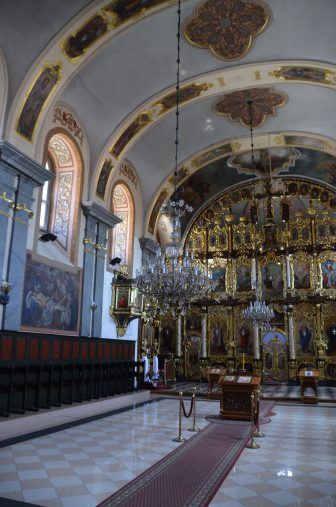 Marge, was telling us “I believe in God in my heart, but I do not go to church so often”.
Marge, was telling us “I believe in God in my heart, but I do not go to church so often”.
That is because there is a lot of corruption among people involved with the churches.
She said “There are three Maserati cars in the country and all of them belong to priests”.
In front of the church, we learned about ‘Slava’.
Slava is the patron saint of family.
Every family celebrates the Saint’s day every year for three days, one for relatives, one for friends and one for the neighbours.
The housewives are very busy every year, cooking many kinds of salads, soup, pork, fat of the pork (I suppose this is something similar to Jumari we ate in Romania) and cakes.
If you are not invited or do not go to the celebration, that means that you have broken off relations with the family.
When you go, you have to take something with you for the family.
According to Marge, the young poor people will take the same cheap wine that they received for their celebration with their friends.
Students are allowed to be absent from school for the day.
So, on the day of Saint Nicholas, the patron saint of the highest number of different types of people, the schools are nearly empty.
The patron saint is inherited from fathers to sons.
For a woman, her saint is the same as her father’s until she gets married, after which her husband’s saint becomes her saint.
From the church, we walked up to a small hill with a good view.
On the way, we saw the oldest house in the town.
It used to be a tavern, called Beli Medved, which was built in the 17th century.
In those days there were networks of underground corridors.
Those were built for military purposes, but after that it became storage.
The long corridor was about 100 metres.
Not long ago, there was an incident whereby the houses built on top of the corridors sank, so the main corridors were filled.
I remember hearing about the underground corridors not long ago and tried to remember.
It was in the Czech Republic.
What this place has in common with the Czech Republic is that they both had a period ruled by Austrian Empire, I think.
I was surprised to see that from the old half broken building, someone came out.
Apparently, some people live there.
From 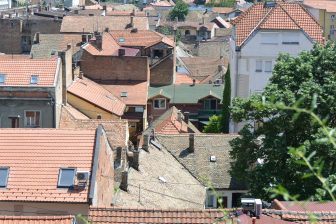
When the Mafia had power, the Mafia in Zemun was the most powerful one.
After Serbia established a democracy in 2000, the president was assassinated in 2003, which gave a great shock to the people.
They said that the secret police who had something to do with the Mafia did this job.
This incident led to a clean up of the Mafia, so now Zemun is peaceful.

